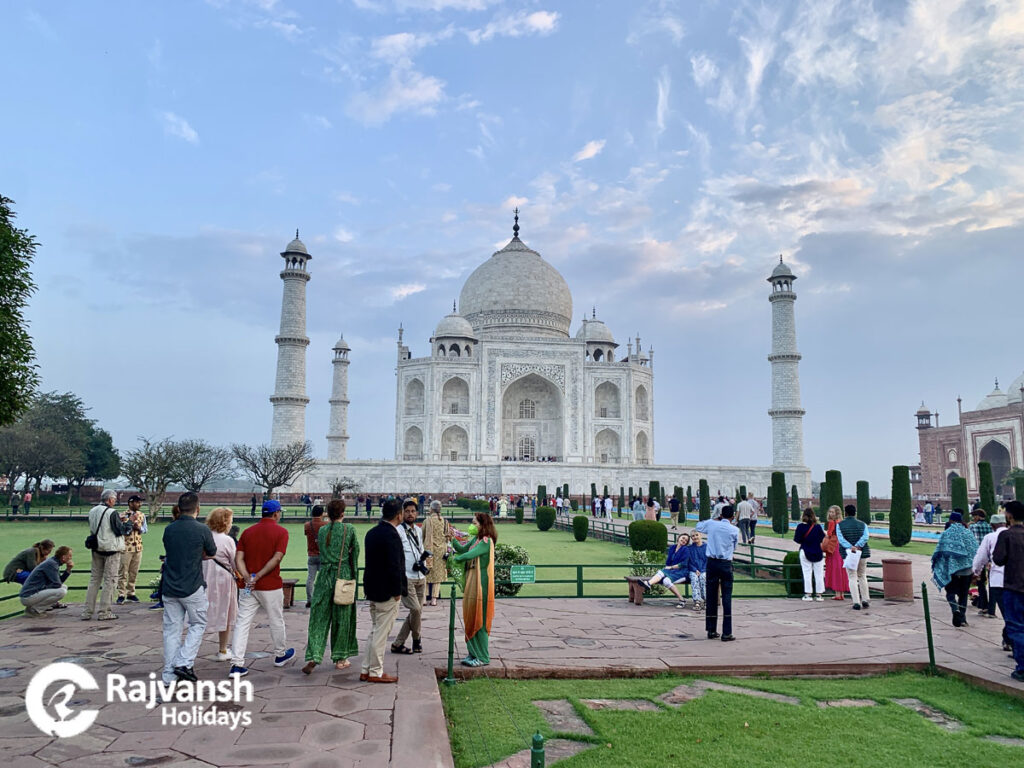The Taj Mahal, standing as a testament to eternal love and architectural brilliance, graces the banks of the Yamuna River in the Agra District of Uttar Pradesh, India. This majestic marvel, commissioned by the Mughal Emperor Shah Jahan, is not merely a structure but a profound expression of love, artistry, and cultural grandeur.
Agra’s Jewel: Taj Mahal Historical Roots and Construction
The Taj Mahal’s story begins in 1632 AD, when Emperor Shah Jahan initiated its construction in memory of his beloved wife, Mumtaz Mahal. The entire complex, spanning nearly 17 hectares, was completed in 1653 AD, with meticulous attention to detail evident in every facet of its design. The mosque, guest house, main gateway, and the outer courtyard with cloisters were added to enhance the monument’s grandeur.
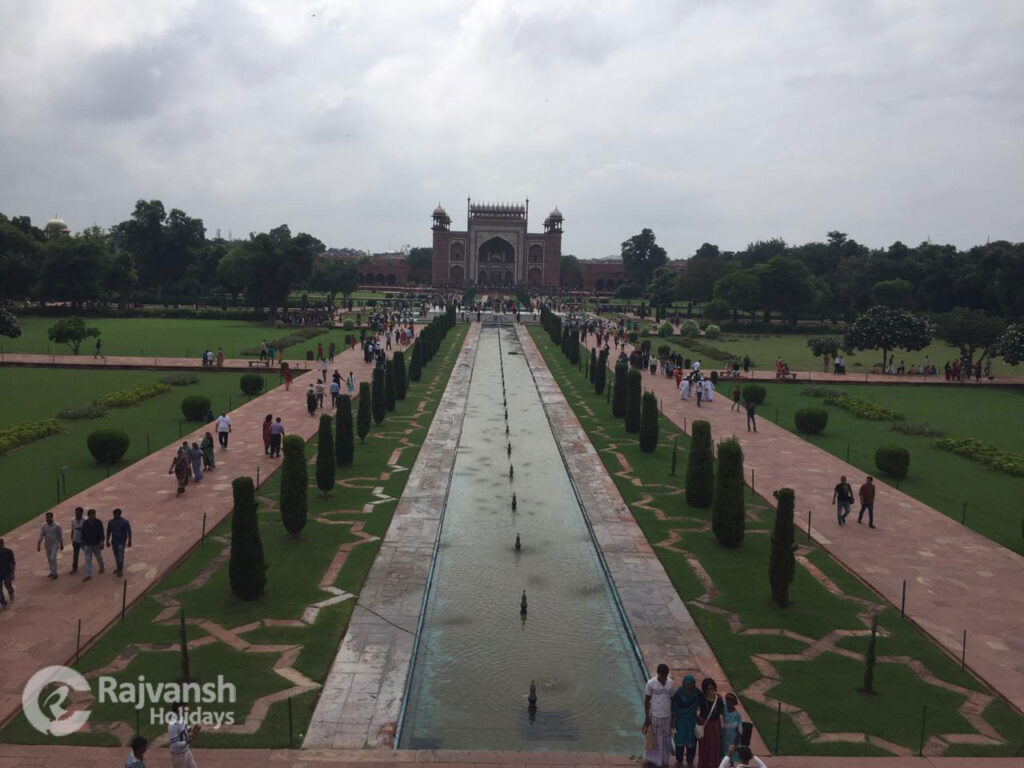
Historical and Quranic inscriptions, adorned in Arabic script, not only chronicle the Taj Mahal’s timeline but also add an artistic touch to its exterior. The diverse team of artisans, including masons, stone-cutters, carvers, painters, and calligraphers, was sourced from across the Mughal Empire, Central Asia, and Iran. Ustad-Ahmad Lahori, the principal architect, orchestrated this symphony of talent, creating a masterpiece that transcends time.
Taj Mahal Architectural Harmony: Indo-Islamic Splendor
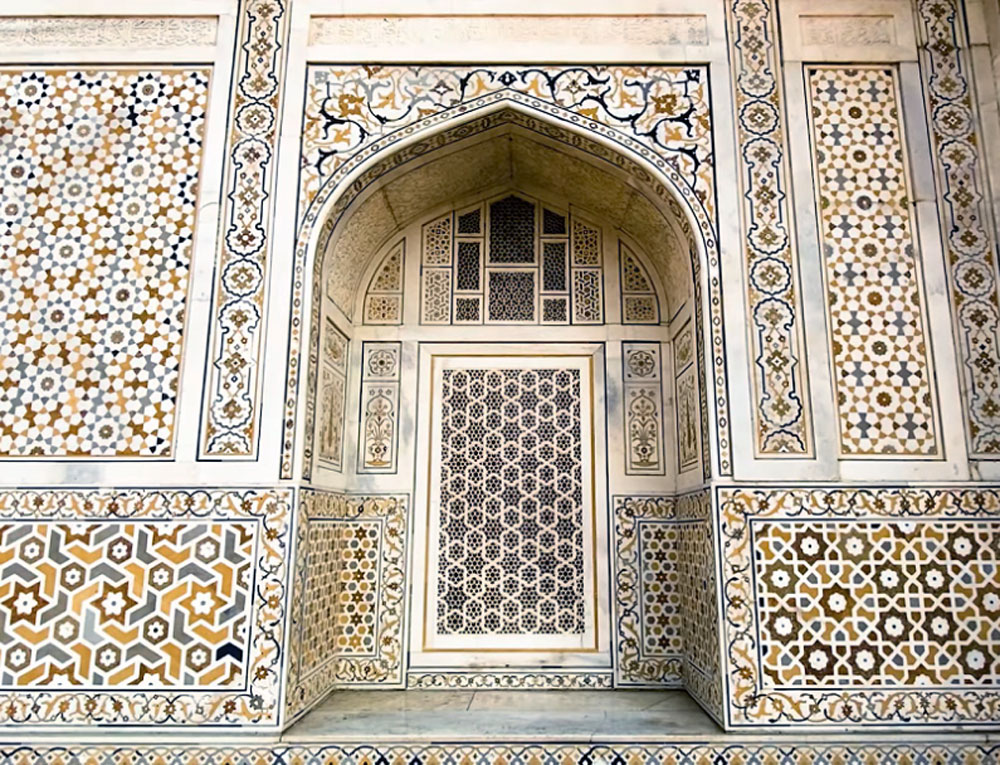
The Taj Mahal stands as the pinnacle of Indo-Islamic sepulchral architecture, showcasing a rhythmic blend of solids and voids, concave and convex elements, and an interplay of light and shadow. Its perfect symmetry, bilateral balance, and harmonious integration of various architectural elements contribute to its recognition as a global architectural treasure.

The central focus of the complex is the octagonal tomb chamber, enveloped by portal halls and corner rooms on the ground and upper floors. The exterior of the tomb is a square with chamfered corners, and the double-story domed chamber houses the exquisite cenotaphs of Mumtaz Mahal and Shah Jahan. The latticed marble screen surrounding the cenotaphs, adorned with intricate floral motifs, reflects unparalleled craftsmanship.
Taj Mahal Innovations and Aesthetic Brilliance
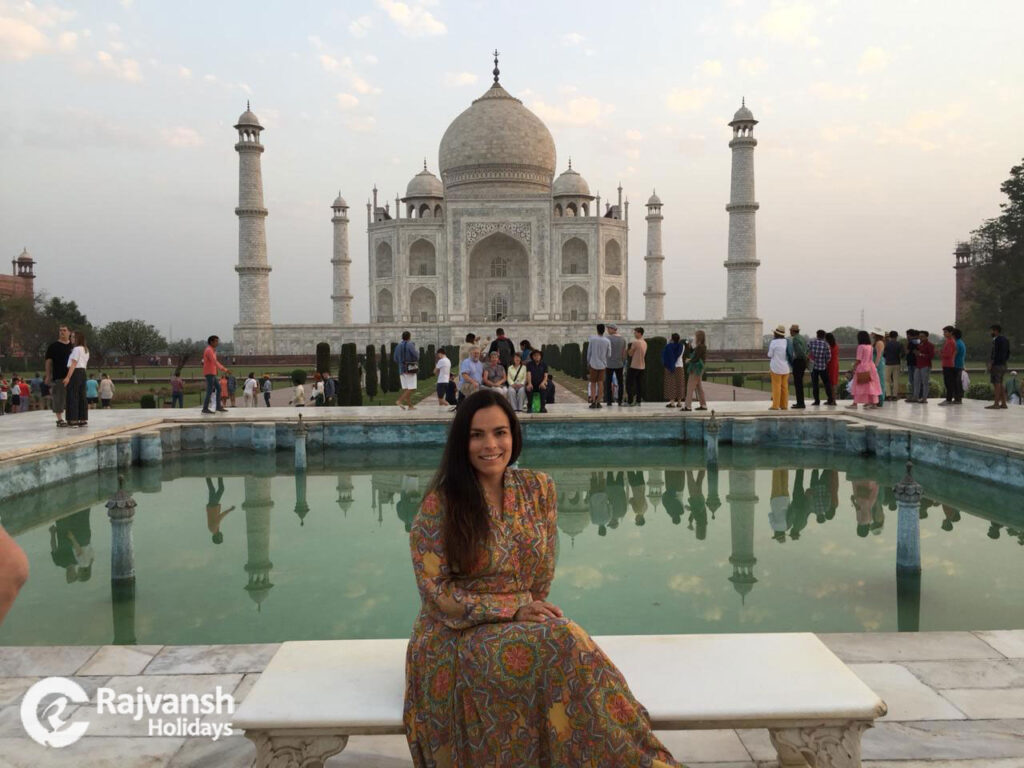
One of the Taj Mahal’s distinctive features is its raised tomb, strategically placed at one end of the quadripartite garden. This ingenious placement adds depth and perspective to the distant view, offering visitors an ever-changing tableau of lush greenery, reddish pathways, and the ethereal blue sky. The four free-standing minarets at the corners not only serve as spatial references but also lend a three-dimensional effect to the entire structure, an innovation previously unseen in Mughal architecture.
Colourful Palette: Nature’s Canvas and Architectural Hues
The Taj Mahal’s captivating beauty isn’t confined to its architectural grandeur alone. The color palette surrounding the monument is a symphony of lush greens, reddish pathways, and the ever-changing hues of the sky. This dynamic environment transforms the Taj Mahal’s appearance, providing visitors with a visual feast that evolves with the shifting light.
Taj Mahal Protection and Management: Safeguarding a Cultural Gem
Preserving the Taj Mahal’s integrity and authenticity is a responsibility shouldered by the Archaeological Survey of India. The legal framework, including the Ancient Monuments and Archaeological Sites and Remains Act 1958, ensures its protection. Continuous monitoring of structural stability, environmental impact, and air quality helps mitigate potential risks, such as atmospheric pollutants that could tarnish the monument’s pristine facade.
A defined buffer zone of 10,400 sq km, encompassing the Taj Trapezium Zone (TTZ), safeguards the monument from pollution. The Supreme Court’s directive in 1996, banning the use of coal/coke in industries within the TTZ, underscores the commitment to preserving this architectural marvel.
The Path Forward: Balancing Tourism and Conservation
As a UNESCO World Heritage Site, the Taj Mahal attracts millions of visitors annually. Balancing the preservation of its existing conditions with the demands of tourism necessitates an integrated management plan. The challenge lies in managing visitation pressures while maintaining the Taj Mahal’s functional and visual integrity. Future developments, especially in proximity to the Agra Fort, must align with regulations to ensure the monument’s lasting legacy.
Conservation Challenges: Nurturing Radiance Amidst Pollution
While the Taj Mahal’s enduring beauty captivates visitors, it faces challenges from air pollution. Efforts to combat discoloration due to environmental factors are ongoing. Conservation initiatives include periodic cleaning, restoration work, and pollution control measures. Preserving the luminous beauty of the Taj Mahal requires a delicate balance between modern interventions and adherence to historical authenticity.
Taj Mahal by Moonlight: Nocturnal Enchantment
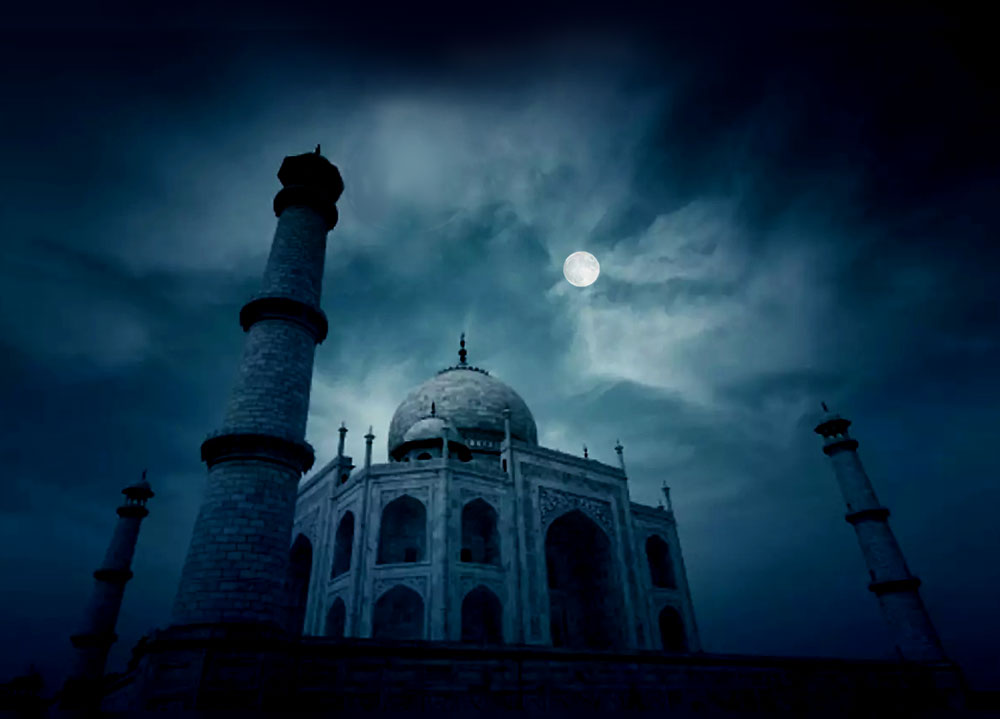
The Taj Mahal’s allure extends beyond daylight. When illuminated, the white marble transforms, creating a captivating radiance. Under the moonlight, the monument takes on a magical aura, captivating visitors with its luminous presence. This strategic use of lighting adds an extra layer of enchantment, showcasing the Taj Mahal’s timeless beauty around the clock.
Symbolism and Artistry: White Marble as a Timeless Medium
The Taj Mahal’s use of pristine white marble extends beyond aesthetic considerations. Symbolizing purity and eternity, white marble became the ideal choice for Emperor Shah Jahan to immortalize his love for Mumtaz Mahal. The Makrana marble from Rajasthan, known for its exceptional quality, luminescence, and durability, became the preferred medium for expressing Mughal ideals of grandeur and sophistication.
Cooling Properties and Comfortable Environment
In the scorching heat of Agra, the reflective properties of white marble contribute to maintaining a comfortable temperature around the Taj Mahal. This practical aspect enhances the visitor experience, preventing excessive heat absorption and ensuring a more pleasant environment. Beyond its symbolic importance, the choice of white marble aligns with the pragmatic considerations of environmental resilience.
Conservation Efforts: Safeguarding for Future Generations
Preserving the Taj Mahal’s brilliance involves ongoing conservation efforts. Periodic cleaning, restoration, and pollution control initiatives aim to safeguard the monument against environmental degradation. As a living testament to love and artistic expression, the Taj Mahal requires meticulous care to ensure that its radiance endures for generations to come.
Conclusion: A Tapestry of Symbolism, Artistry, and Enduring Beauty
In conclusion, the Taj Mahal stands as a rich tapestry of symbolism, artistry, practicality, and cultural significance. Its enduring allure and timeless beauty continue to captivate visitors worldwide, offering a profound glimpse into the heights of human creativity. As this ivory marvel graces the banks of the Yamuna, it remains not just a monument but a sublime expression of love, artistry, and the enduring allure of white marble in the heart of Agra, India. The Taj Mahal’s journey through time persists, inviting each generation to witness the power of love etched in stone.
Please feel free to contact us at any time for any other travel information, tour bookings, tickets, transportation, or hotel bookings in India. Just call or WhatsApp us at +91 98370 44720. You can also visit our official website: www.tajmahaltourguide.com

